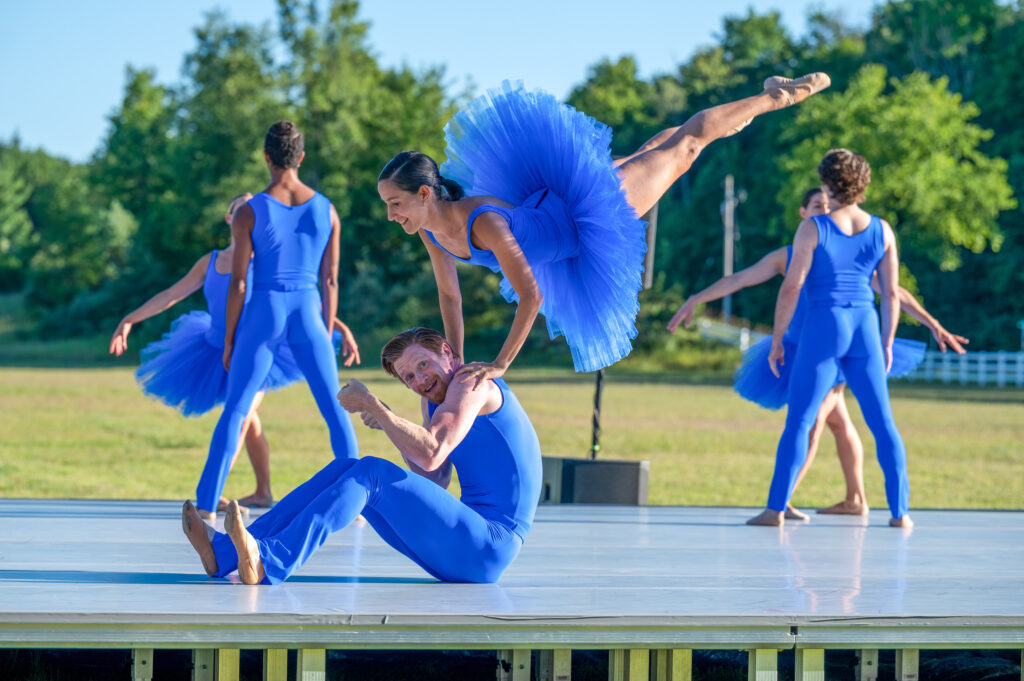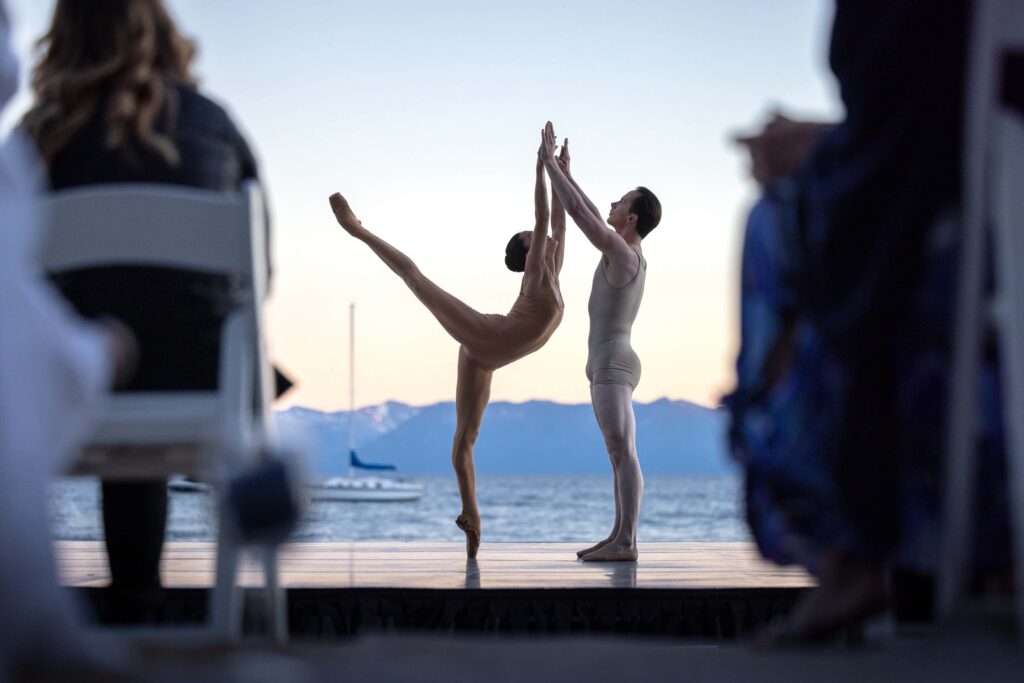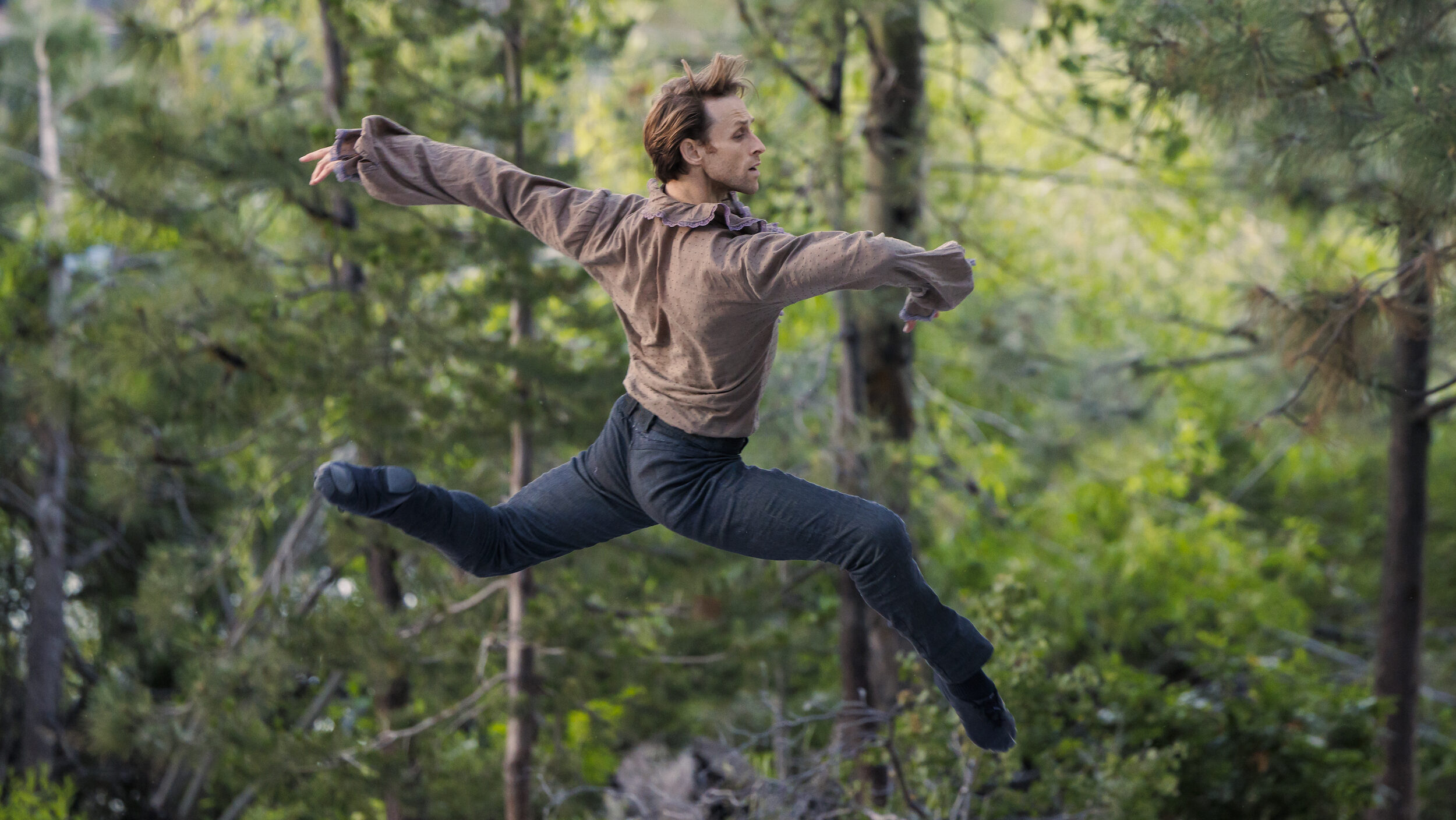The Do’s and Don’ts of Performing Outdoors
When Christin Hanna founded the outdoor Lake Tahoe Dance Festival in 2013, she learned the hard way how a vinyl dance floor reacts when not protected from the hot, midday sun. “If you do a pirouette, [the floor] will attach to your foot and swirl underneath you, like an ice cream cone swirl.”
From melting marley to pine sap to being up close and personal with your audience, performing outdoors comes with challenges but also, according to our experts, great joys. Read on for their recommendations to make the most out of outdoor performances.

Research Your Environment and Pack Accordingly
Kate Loxtercamp is a veteran of performing outside. Ballet Arizona, the company she dances with, has two annual outdoor programs (one to start and one to close out its season); plus, Loxtercamp has guested at Lake Tahoe Dance Festival. Performing in different regions means adjusting her packing list accordingly. For instance, she doesn’t worry about special coverings for her pointe shoes in the sandy, dry desert: “Walking across that [sandy surface] doesn’t really affect my shoes.” That’s not the case in Lake Tahoe’s forest setting. “There’s sap and leaves and needles and things all over.” In addition to protecting her shoes, Loxtercamp wears cover-ups to protect her costume from snagging on branches.
Of course, it’s also important to protect yourself from the elements. Arizona can have huge temperature swings, from 100-plus-degrees-Fahrenheit days to cold, windy nights, says Loxtercamp. You can’t control the weather, but you can pack layers to give yourself options.

Loose layers may also provide extra sun protection, since heavy amounts of sunscreen can be risky on dance floors. In the early years of Lake Tahoe Dance Festival, Hanna says, this problem was discovered when performing artists wore sunblock and their skin made contact with the stage. “We had a couple of really slippery spots that were pools of sunscreen grease. So [the festival] now has a very-very-light-sunscreen rule.”
Fuel Your Body Adequately
It’s important to maintain your healthy routines while dealing with environmental variables. “Dance athletes, whether performing outside or indoors, should always make sure that they are fueling themselves with enough calories each day so that they can replenish their storage energy, or glycogen, and have extra for what they need,” says Marie Scioscia, registered dietitian, founder of Cinch Nutrition, and author of Eat Right Dance Right.
Performing in hot environments requires extra attention to hydration, as well. “Athletes can lose valuable electrolytes, such as sodium and potassium, in sweat, in addition to having trouble concentrating when dehydrated, which might result in injury,” Scioscia notes. Drink water in the days leading up to the performance, too, so that the amount you lose equals the amount you’ve taken in. “The goal of the dancer in this type of environment is to start the day in water balance, not in a deficit from the day before.”
Loxtercamp keeps to a hydration strategy when performing outdoors: “I’ve found that taking smaller sips of water consistently throughout the show whenever I’m offstage is more helpful than trying to get a bunch of water in at once.”
Make the Most of Rehearsal
Brent Whitney, co-founder of Traverse City Dance Project, which holds outdoor performances throughout Michigan each summer, says that dancers don’t always have as much access to the stage as they would in a traditional theater. His production team often needs to cover the outdoor stage to protect it from the midday sun or afternoon showers, meaning artists often only get one full run-through on it.

Given the limitations, Whitney recommends not waiting until you get onstage to think about technical blocking.
“We don’t have wings outdoors, so we’re making sure people are prepared for that from the beginning. Where are you actually entering from? We ask choreographers, ‘Are the dancers just standing on the side? Do you want them to go sit behind the stage?’ ” says Whitney. If you’re expected to be visible even when you’re “off” the stage, you should rehearse those exits, entrances, and rest periods in the studio.
Find Connection in Nature
Whether you’re performing at a lake, in a forest, or in the middle of a desert landscape, part of your preparation should include sorting out your sight lines. Hanna recommends finding visual markers that aren’t wings and lights. Whitney adds, “Sometimes you’re spotting a tree!”
There’s likely a lot happening around you—birds singing, sun shining, water splashing, says Loxtercamp—and while those elements may seem distracting at first, they can be beneficial to your performance experience. “It’s an interesting connection to nature and to humanity around you that is very special,” says Loxtercamp.

Special, and perhaps even spiritual. Hanna compares Tahoe’s natural surroundings to a “cathedral of nature,” where she communes with the beautiful environs and the community it draws. “It’s a really profound appreciation that emanates from the audience, and it’s a wonderful, wide-open feeling.”







